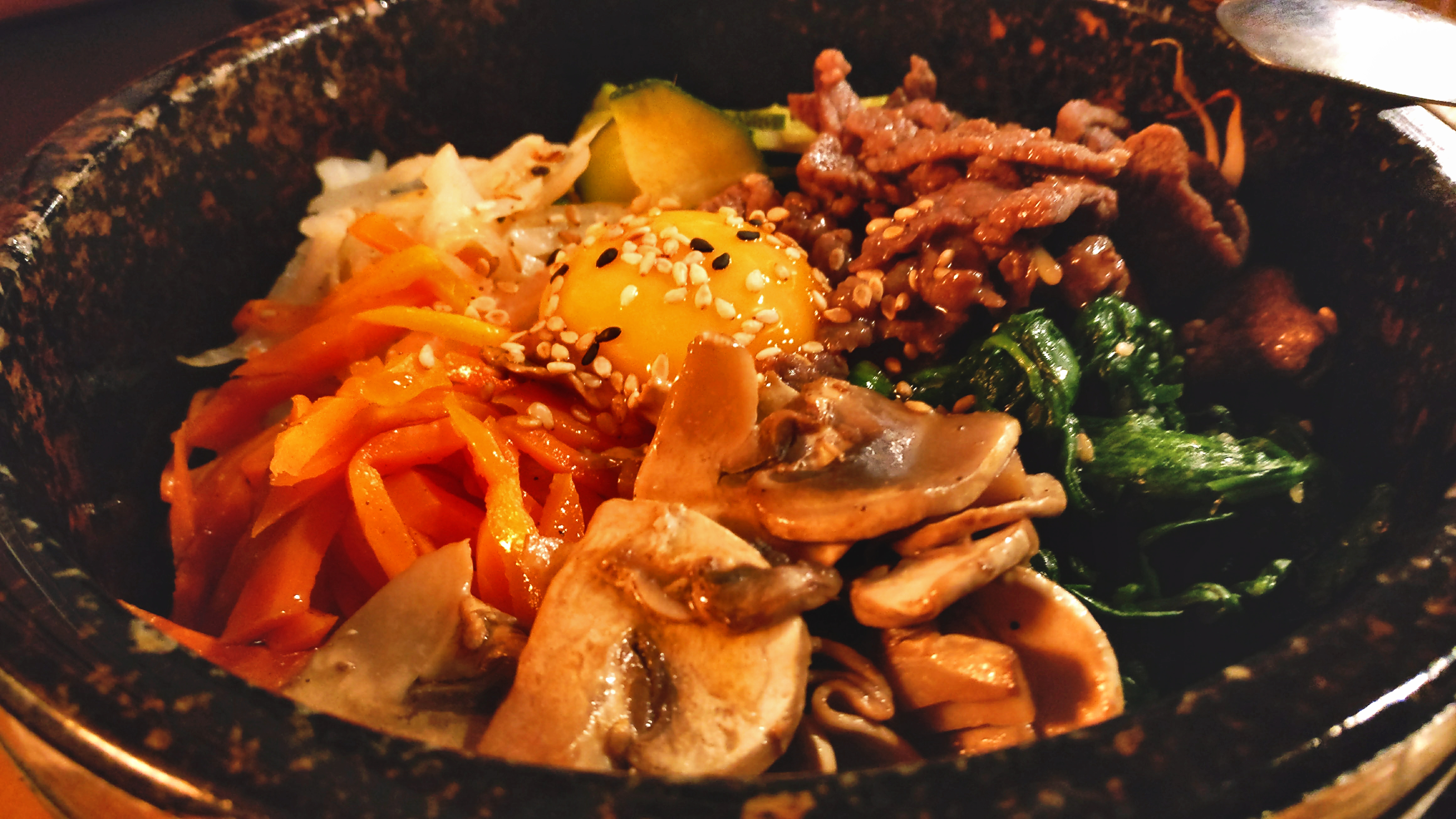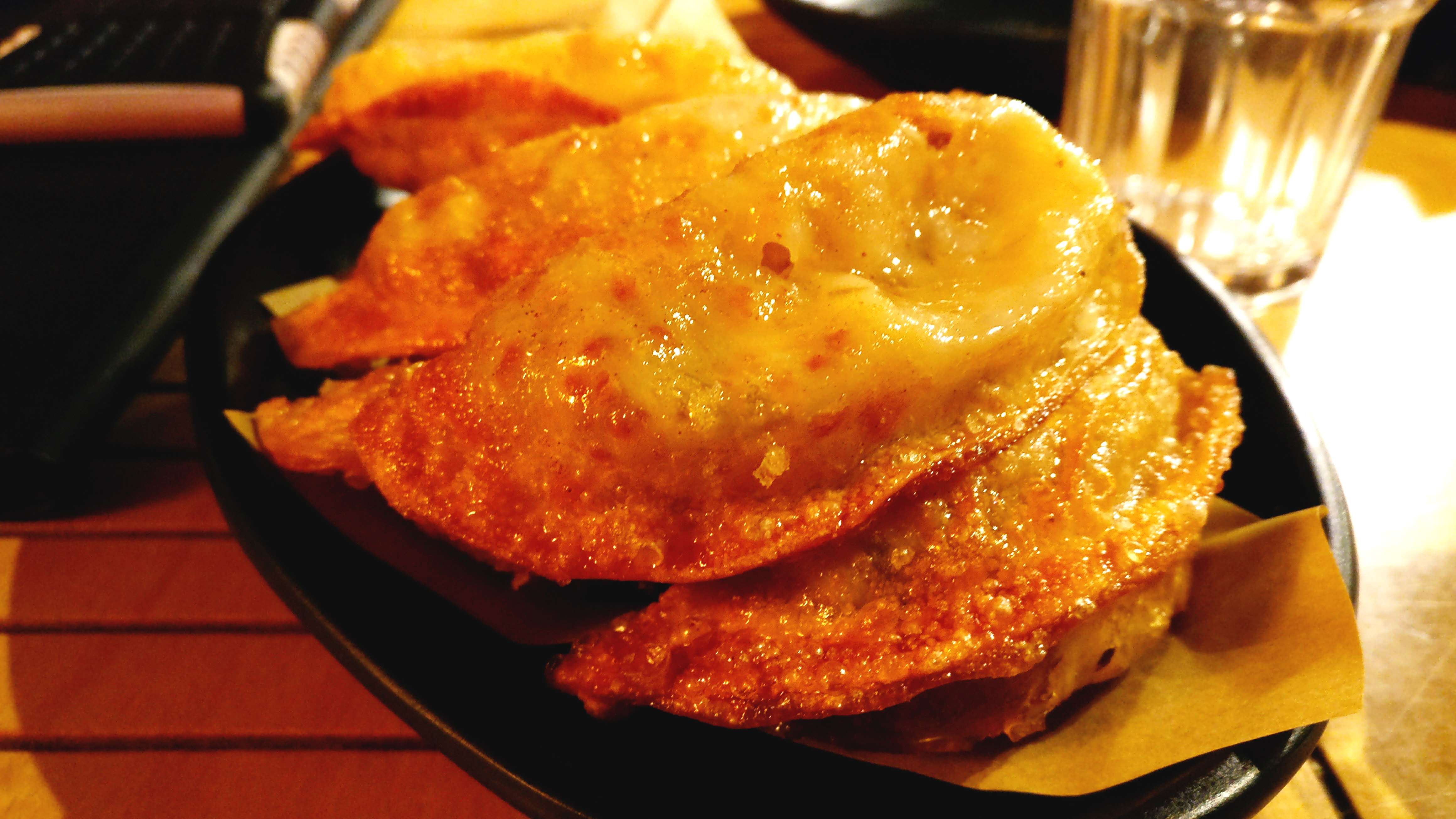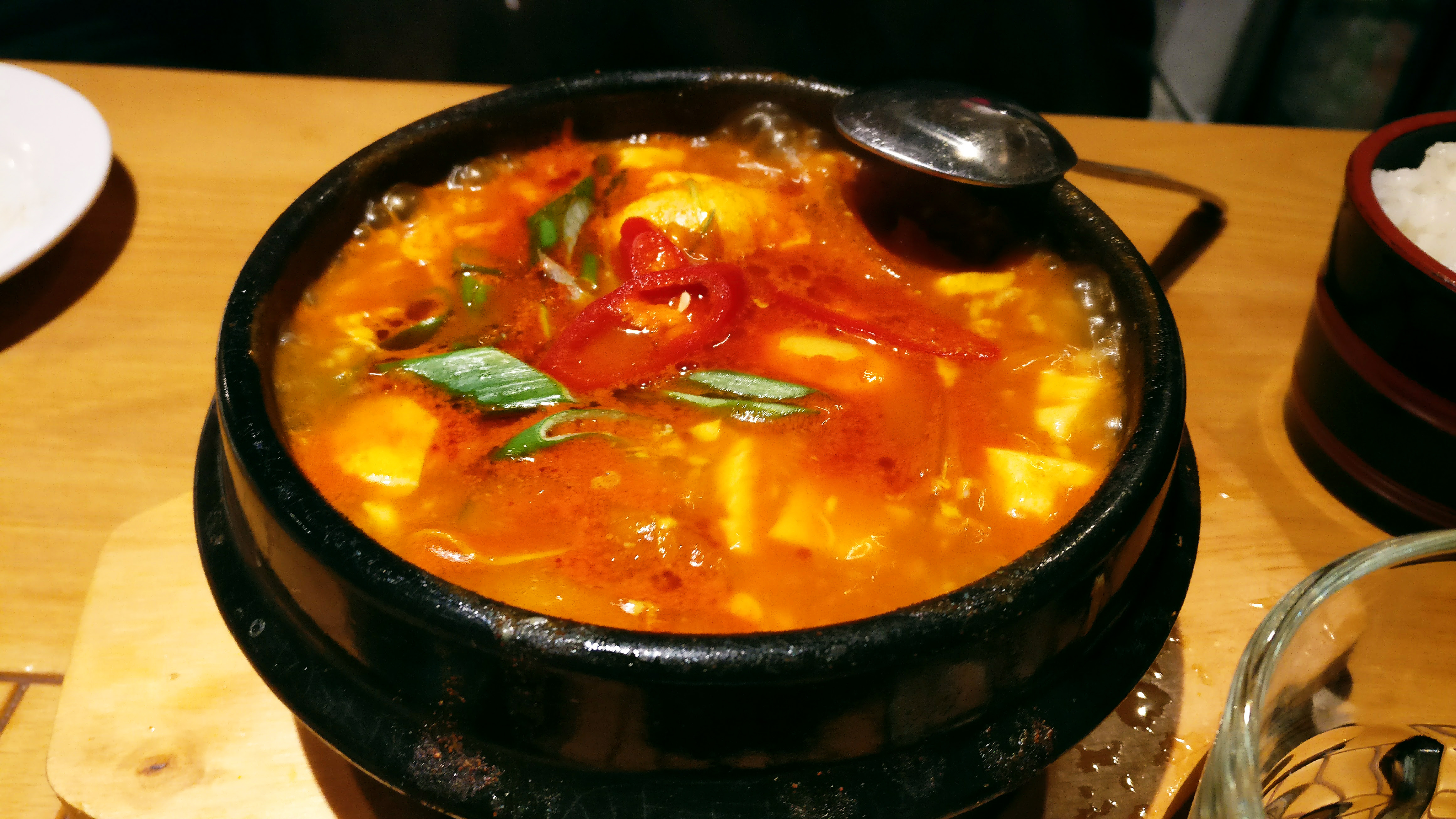Brighton has long suffered from a lack of Korean food. The lovely one-woman operation at the Open Market, KorPan, serves up great home-style classics. Namul does great cold food. Binari in Brighton’s Asiatown (Preston Street) was nearly always a letdown. About halfway up Trafalgar Street in the space formerly occupied by revered ‘ethical chicken’ shop H.en, Oshio’s interior is a tour-de-force in how to spin industrial lighting, sparse but homely Ikea furnishings, and petite lacquered wood tables into “contemporary décor”. Heavily distressed grey flooring is redolent more of familiar Spencean brutalism than shabby-chic or loft-inspired designs.

This is a love-letter to the platonic ideal of the (fried) dumpling, whose essence is the contrasting textures of a crunchy outside and tender but punchy filling
You don’t come here for décor or ambience though. Oshio is the home of Brighton’s best bibimbap (ve/v options available). This Korean national dish combines a base of rice with vegetables, meat strips and gochujang (a red pepper paste) layered on top, all served in a sweltering stone bowl that keeps the food hot and transforms the final morsels of rice into crispy brown goodness. At £8.50 for a portion hearty enough to sate even the hungriest of mouths, Oshio is an ideal lunchtime reprieve. If you’re looking to eat a full and varied meal true to the bapsang tradition of centuries past, there are plenty of side dishes to satisfy your foodlust. Handmade mandu (Korean dumplings) stuffed with garlic, ginger, minced pork, and spring onion before frying are served up with a beautiful golden-brown hue. This is a love-letter to the platonic ideal of the (fried) dumpling, whose essence is the contrasting textures of a crunchy outside and tender but punchy filling.

Vegetarians and vegans can also delight at the wonders of soondoobu jigae, a fiery stew with kimchi and impossibly soft but still structured tofu. For those looking for less spice, Oshio also does a commendable job at Japanese food, perhaps owing to their head chef’s Japanese nationality and work history. The shiyo-style ramen does not quite match up to Goemon, and the tempura is great but not life changing. However, folks in the market for sushi will be pleasantly surprised. Whatever you eat, order the salmon avocado maki and savor the sensation of fish melting in your mouth.

Kimchi is served with nearly every Korean dish here. At a time when food prices are finally increasing and traditionally cheap foods are reinvented for upmarket venues, kimchi should remind us of two things. One is that scarcity of natural resources can produce truly phenomenal culinary results – fermented cabbage with pepper is the worker’s food. The related lesson is about the tensions between fermentation and rot. While many are familiar with kombucha or yoghurt, we do not often theorise about when the proliferation of microorganisms in food crosses from delicious to repulsive. For the uninitiated, Kimchi might well be that test. Soju, the cleaner and less grainy Korean answer to sake, is also affordable here. This ought to prompt some combination of reflection and rowdiness in every diner.

